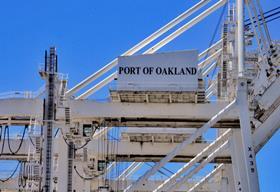
The Port of Oakland hopes a ‘pop-up’ yard will lead to a resurgence in agricultural exports through its terminals.
The 9ha waterfront site is being partially funded by the US Department of Agriculture (USDA).
Port of Oakland executive director, Danny Wan, said the new partnership with the USDA aims to clear bottlenecks impeding outbound shipments.
“As a major hub for the export of California’s and America’s fresh fruits, nuts, dairy and frozen proteins, we appreciate the Administration’s efforts to ease shipping delays and costs for agricultural exporters,” said Wan.
“We’re in complete lockstep with the USDA on this issue and we’re gratified by their willingness to work with us on behalf of Oakland’s export customers.”
The USDA will fund 60 per cent of start-up costs for Oakland’s export container depot.
Agricultural exporters will have exclusive access to pre-cool refrigerated containers for loading perishable products, while trucks entering the port can bypass marine terminals.
Agricultural exporters will also receive direct incentives from the USDA to utilise the pop-up yard.
“Covid-19 revealed vulnerabilities across our supply system, both at our ports and in the agricultural sector,” said US agriculture secretary Tom Vilsack.
“This partnership with the Port of Oakland builds on our aggressive approach to addressing challenges within the supply chain and sends a strong signal that we are committed to working across the Administration and with state, local and private partners to mitigate complex port capacity and congestion issues and to keep American agriculture on the move.”
In addition to the pop-up yard, the Port of Oakland is planning to develop long-term and permanent facilities to accommodate cargo fluidity.
The port’s outer harbour terminal facilities, when retrofitted and upgraded, will provide another 48ha of capacity for cargo movements and processing. The port is also designing a zero-emissions port to move more cargo efficiently and without impacting air quality.
“With environmental-conscious planning and investment, the port can add additional capacity to support goods movement with next generation of electric and clean energy equipment,” said Wan.



